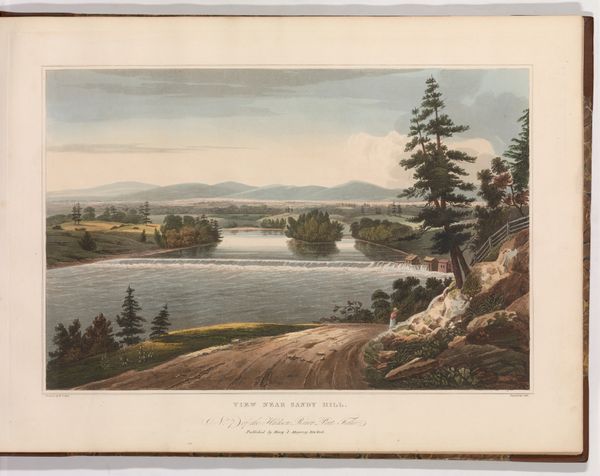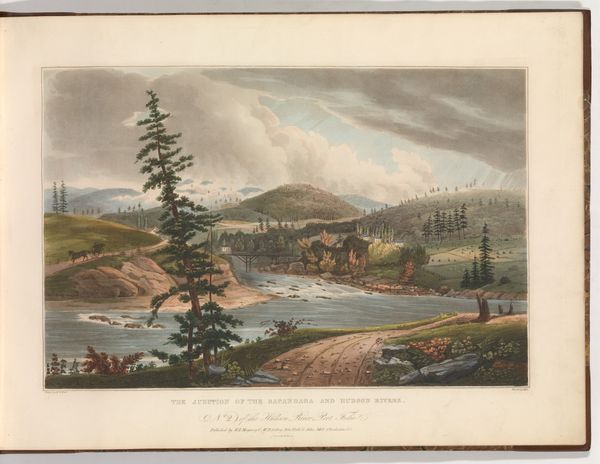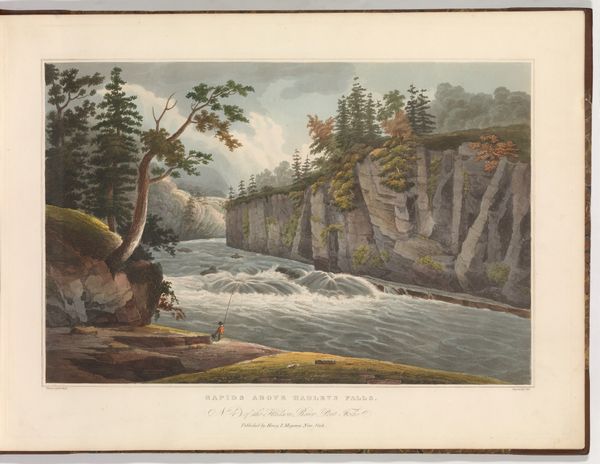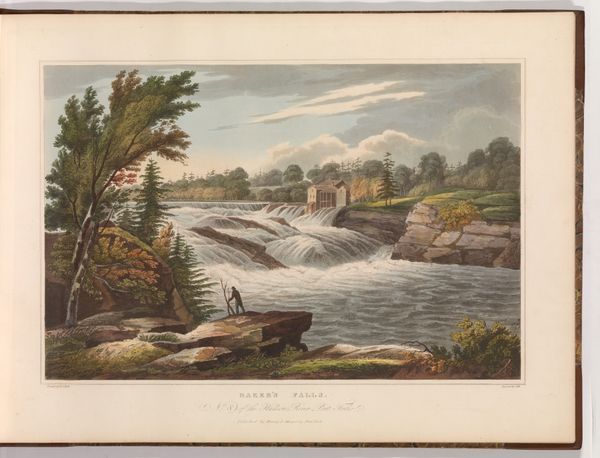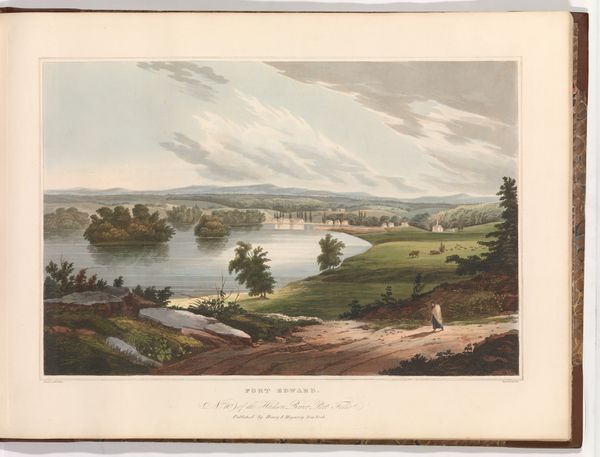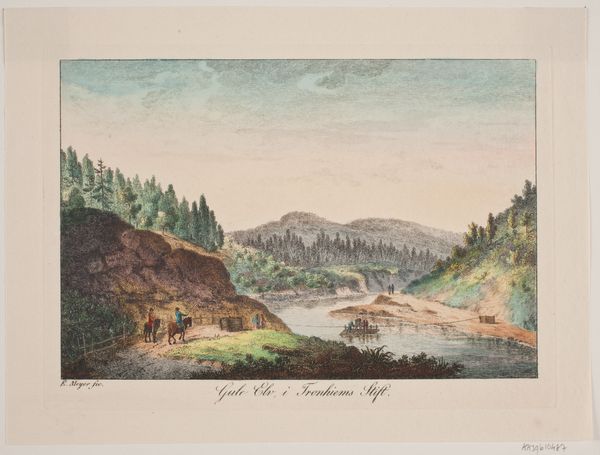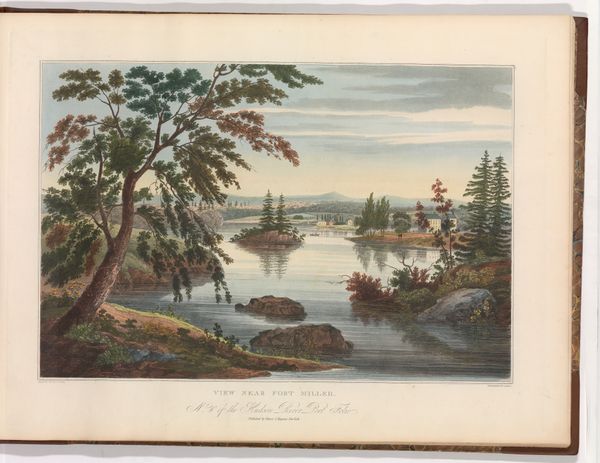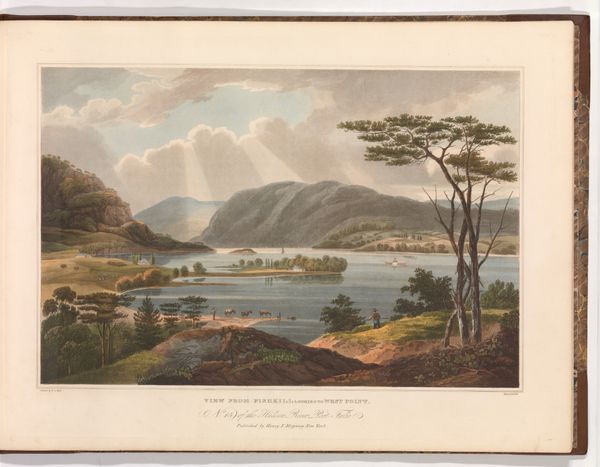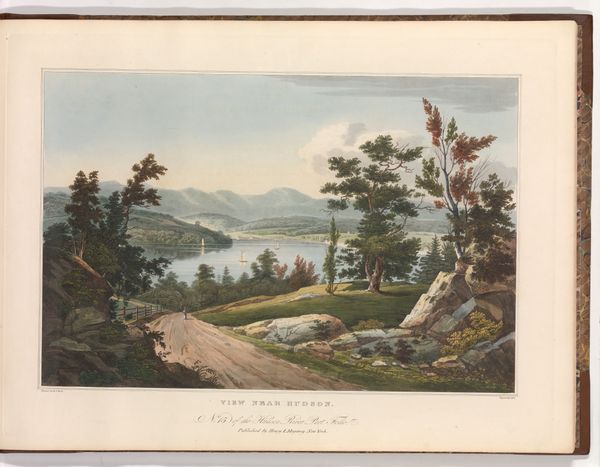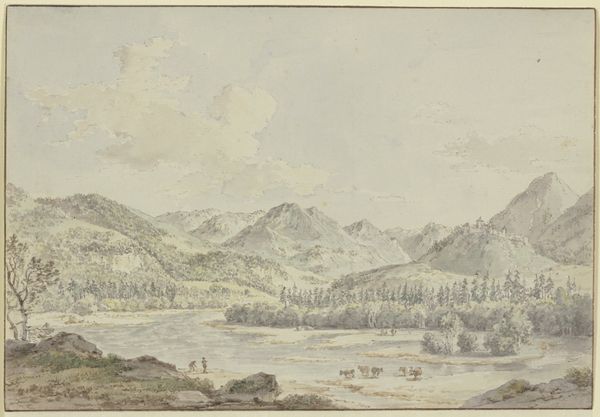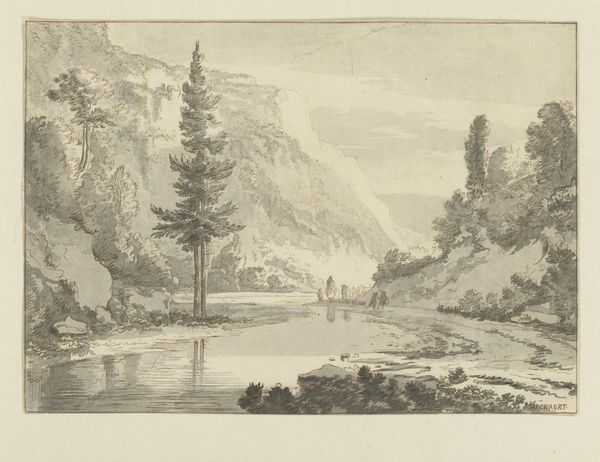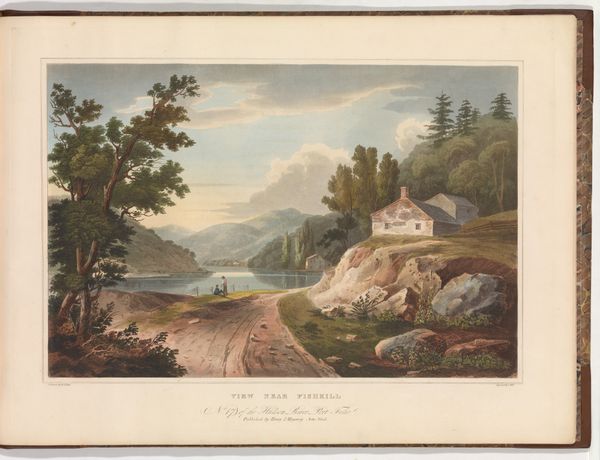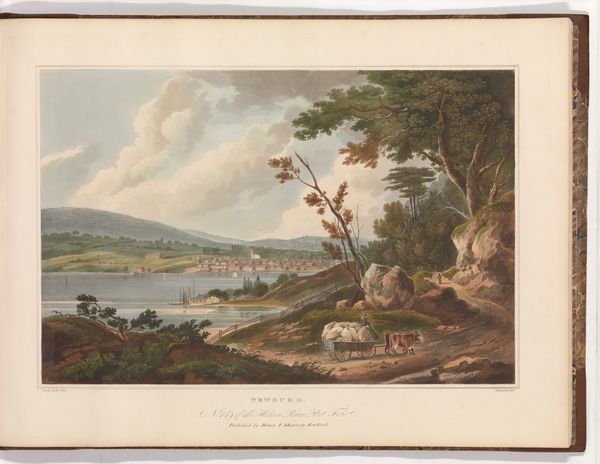
Little Falls at Luzerne (No. 1 of The Hudson River Portfolio) 1822 - 1823
0:00
0:00
Dimensions: Image: 14 1/16 x 20 3/16 in. (35.7 x 51.3 cm) Sheet: 19 x 24 1/2 in. (48.3 x 62.2 cm)
Copyright: Public Domain
Curator: Welcome! We’re here today to discuss John Hill’s “Little Falls at Luzerne,” number one from The Hudson River Portfolio, a print made around 1822 or 1823, now residing here at the Met. Editor: It’s remarkably tranquil at first glance. The composition feels carefully structured, almost geometrically, with the rocks, river, and trees all creating distinct planes. Curator: Indeed. Hill's work participates in the broader discourse of early American nationalism and the myth of the frontier. The very act of depicting the Hudson River as a "portfolio" suggests a desire to define and celebrate a distinctly American landscape and identity, particularly its wilderness. Editor: But that serenity seems deliberate, carefully constructed through balanced composition and soft watercolors. The interplay between the rough texture of the rocks on either bank of the falls and the fluid cascade of the water is also well-represented, if subtly so. I notice the perspective leads the eye smoothly to the mountains, then gently upwards with the clouds, in a measured ascent. Curator: And who benefits from such depictions? The lone fisherman on the right bank, positioned perfectly, offers a certain framing of American identity. We have to interrogate the colonial undertones and narratives of appropriation in these romantic portrayals. Editor: Certainly. Though consider also the artist's sophisticated understanding of form—the use of light and shadow to suggest volume, the arrangement of elements to guide the eye. Even within a politically charged context, these choices can’t be overlooked. And how deftly Hill blends drawing and printmaking techniques here, so carefully balancing realism with the artifice inherent in print production. Curator: Those techniques serve the construction of a particular image of America, erasing histories of dispossession and constructing a nature separate from its native inhabitants. We need to keep these power dynamics in focus. Editor: I concede that it isn't straightforward! Still, a keen understanding of artistic practices of representation contributes invaluable critical perspective. Curator: Absolutely. Context and form must exist in dynamic relationship, informing each other, in any critical act. Editor: Precisely! Only in looking so closely, may we avoid misapprehensions.
Comments
No comments
Be the first to comment and join the conversation on the ultimate creative platform.
